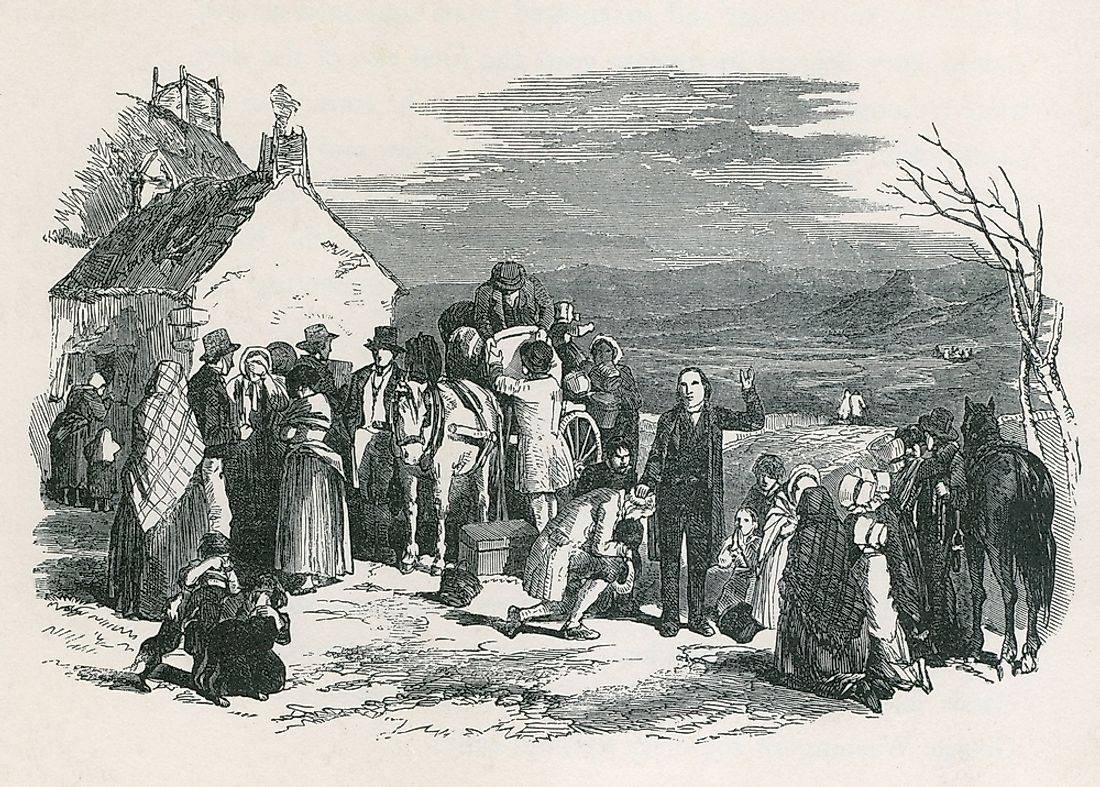What was the Irish Potato Famine?

Between 1845 and 1852, Ireland experienced one of the greatest and most catastrophic disasters in the country's history. The Irish Potato Famine, also known as The Great Hunger, swept through the country and left approximately one million people dead and millions more starving and on the verge of death. The Irish Potato Famine, occurred when a bacteria Phytophthora infestans (Blight) affected thousands of acres of potatoes which was Ireland's staple food, causing loss of crops and leaving the country with nothing to feed on. It is also recorded by history.com that the famine led to the displacement of more than one million more people who sought refuge in the United States, Canada, Great Britain, and Australia.
Causes Of The Irish Potato Famine
Potatoes were a supplementary dish and played inferior to milk, grain products, and butter but gained popularity in the country during the winter before it evolved and became the main diet particularly among the low-class people in the society. By 1815, more people had turned to growing potatoes because it was suitable for the soil, required less labor, and was a calorie-dense crop. The British had colonized Ireland and used much of their land to cattle that supplied milk and beef to the home market but left the Irish with minimal land to cultivate food crops. The Irish focused on the Irish Lumper variety of the potato because it yielded high returns even in the limited land.
By 1840, Phytophthora infestans was spreading across Europe and affecting crops across the continent. In 1845 it reached Ireland where its effect was enormous because it affected the staple food. The farmers depended on one variety of potatoes, and the country was ill-prepared to deal with it. The farmers had also transformed the grazing lands into farms, and nearly a third of animals were fed on potato fodder. Though the main reason for the famine is attributed to the destruction of potato farms by the bacteria, several other factors contributed to and magnified its effects. Among them is the subdivision of land into smaller units than no other crops planted on the land would be enough to feed a family. Penal laws in the early 18th century prohibited Irish Catholics from owning or leasing land, voting, and engaging in political activities in disregard that they made up 80% of the population. Although by 1829 the laws had been changed, the damage was already done. The British laws imposed on the Irish people also did not allow the country to make its own decision concerning the use of land and importation of food particularly grains without the intervention of the colonial government.
The Aftermath Of The Famine
The famine had a direct impact on the population of Ireland, which dropped from 8.1 million in 1841 to 6.55 million in 1852. It is estimated that one million people died as a result of the famine while many more migrated to other countries. Several people have described the famine as a genocide due to the slow and inadequate measures by the British to take action. Several memorial monuments have been erected in several parts of the world in honor of those who died.











